Abstract
Studies of ventilatory capacity change in small groups of employees during a shift in a cotton mill and in three cotton ginneries in Uganda, a sisal factory in Kenya, and a jute mill in England, have demonstrated that an effect is produced by the dust in the cotton mill and in a very dusty ginnery but not in two other less dusty ginneries. No significant effect was detected in the sisal factory or in the jute mill despite much higher dust concentrations than in the cotton mill.
The dust sampling instruments gave the weight in three sizes: Coarse (>2 mm.), medium (7μ to 2 mm.), and fine (<7μ). The samples were analysed for protein, mineral (ash), and cellulose (by difference). The fine and medium sisal and jute dusts contain less protein than cotton dusts. The physiological changes observed in the employees in the cotton mill indicate the need for general dust measurement and control, even when new carding machinery is installed in a new mill.
Full text
PDF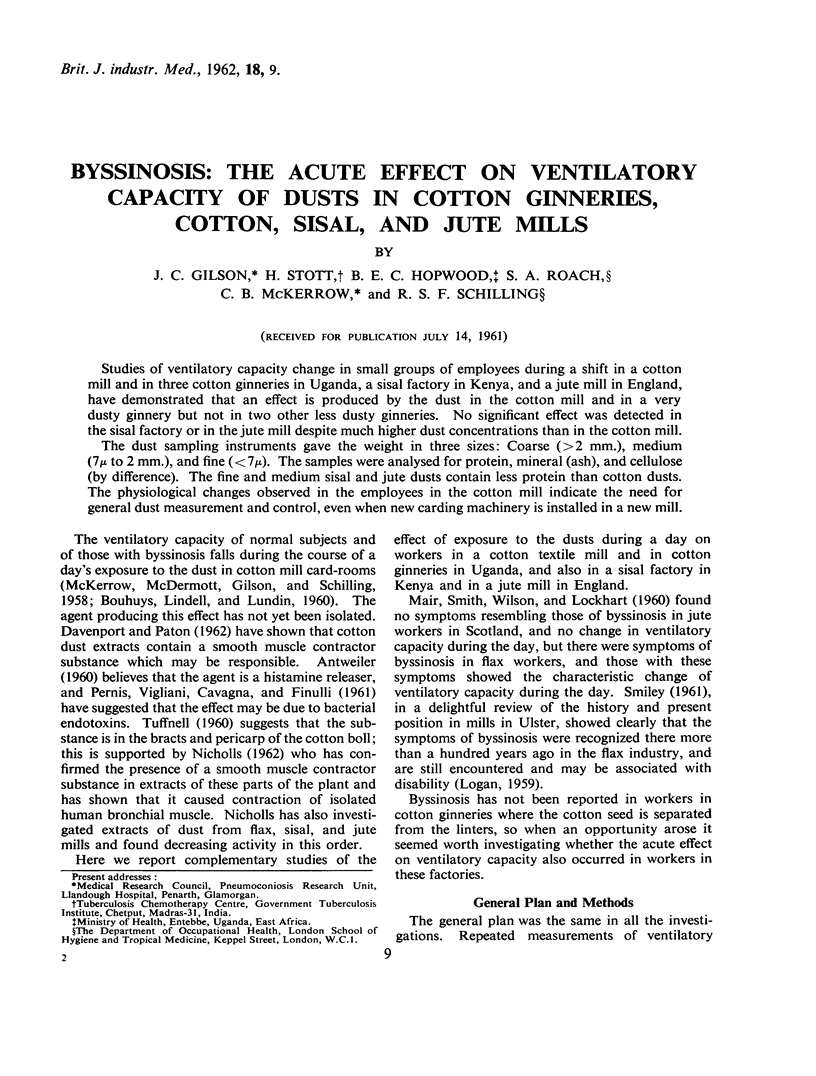
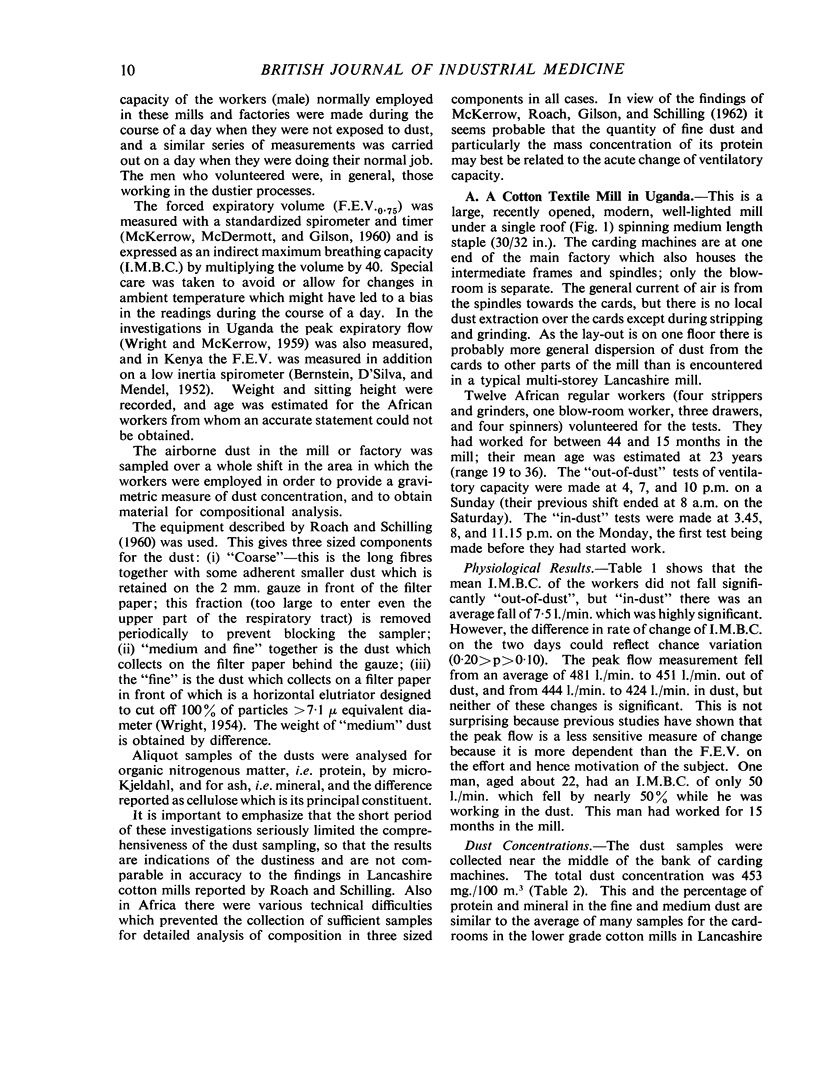
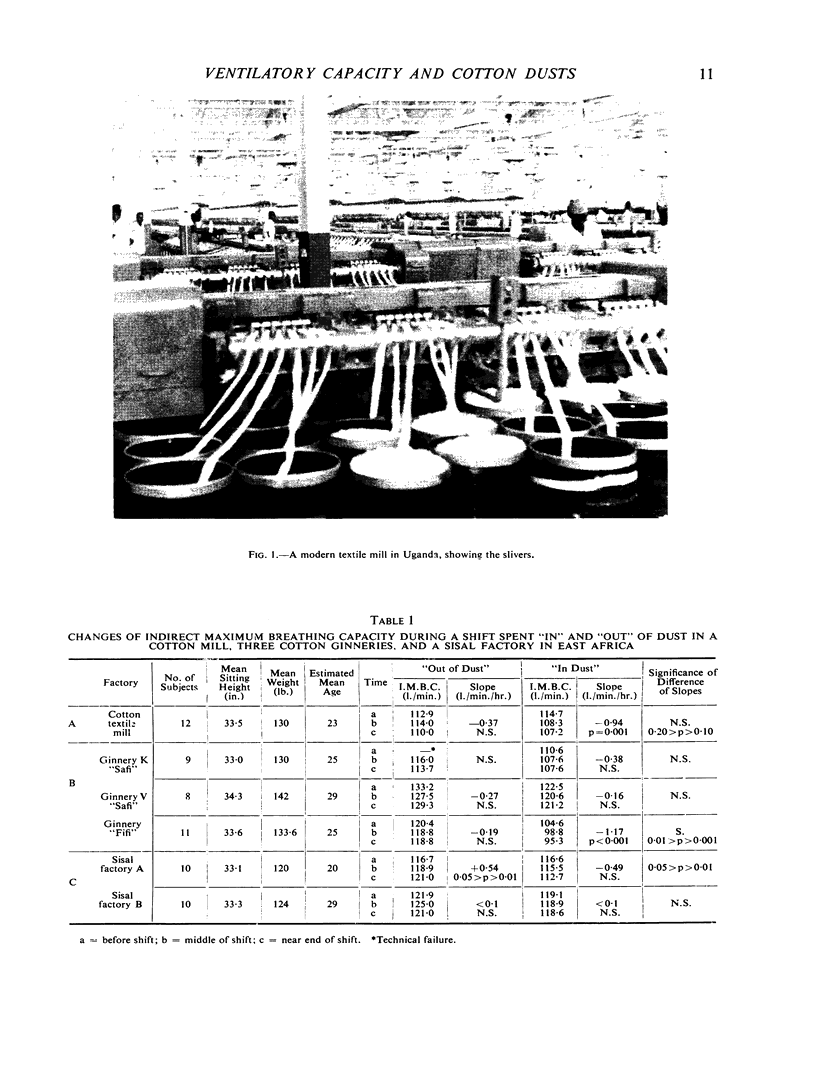
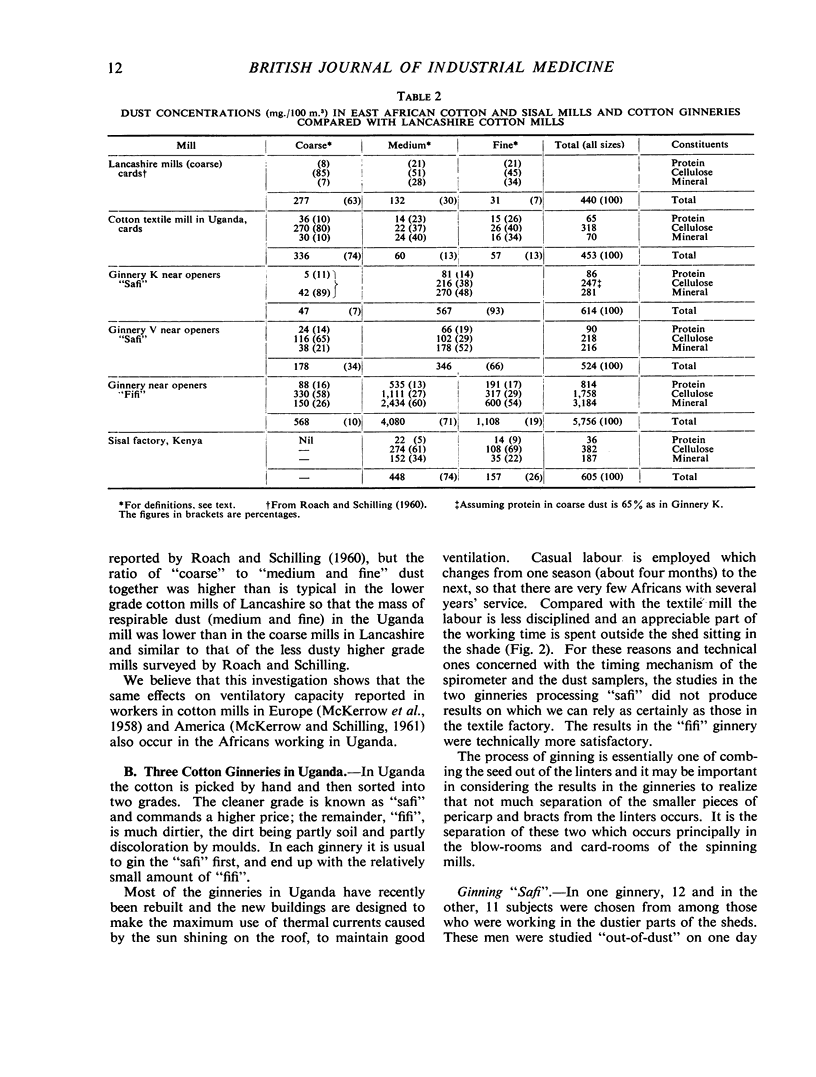
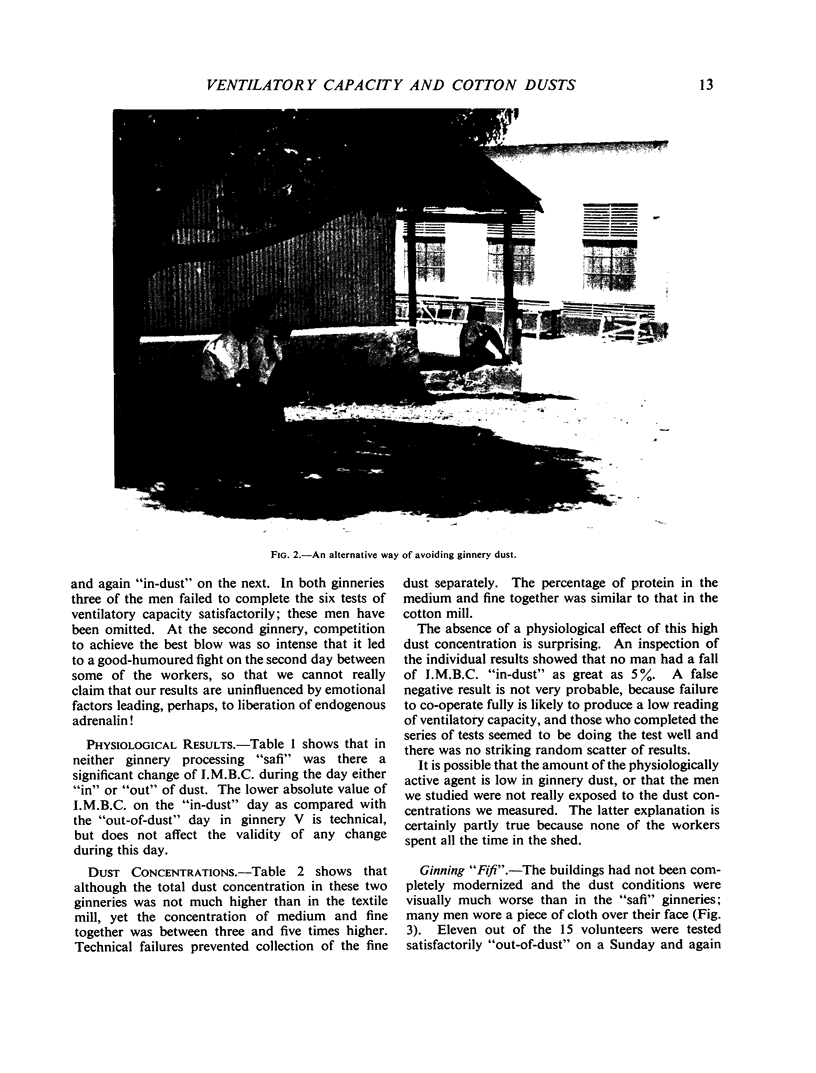
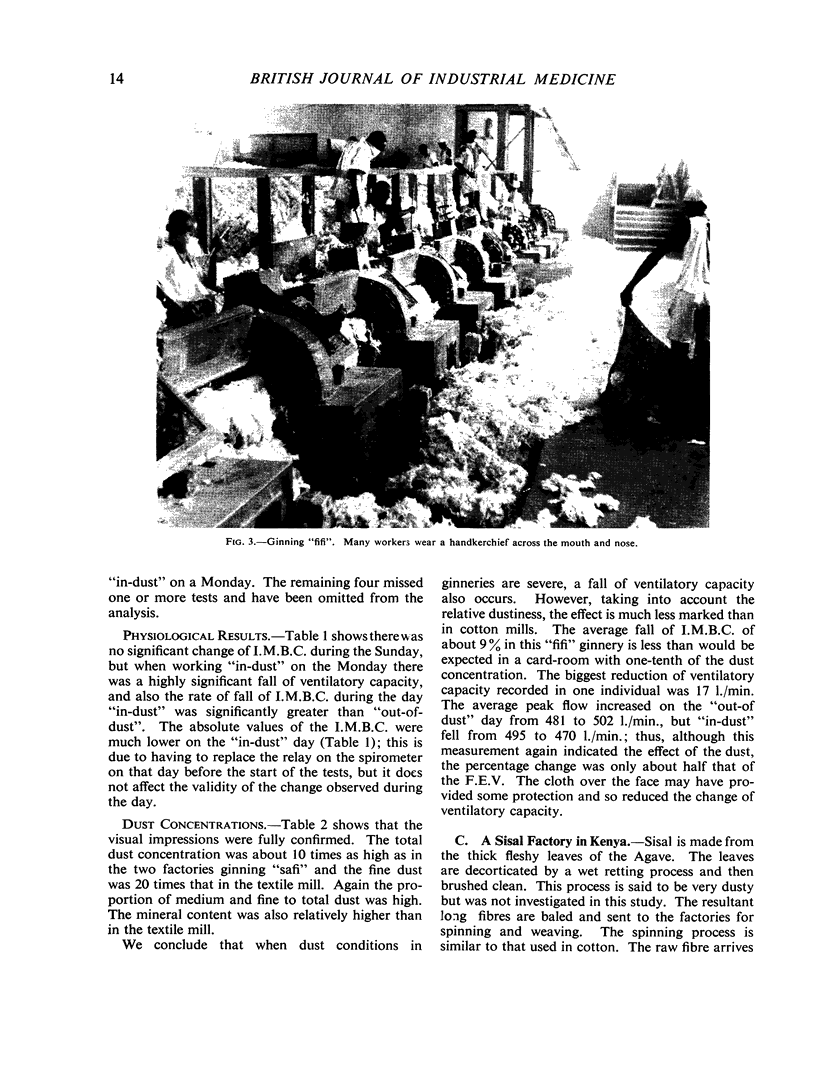
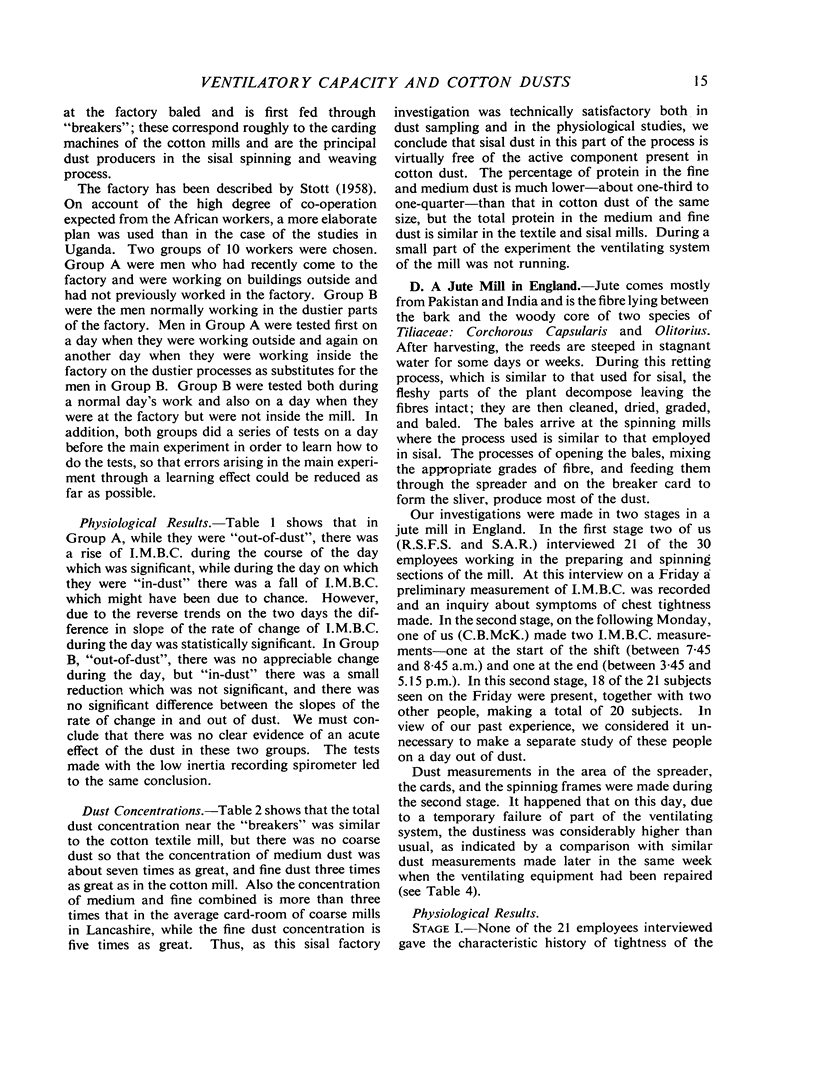
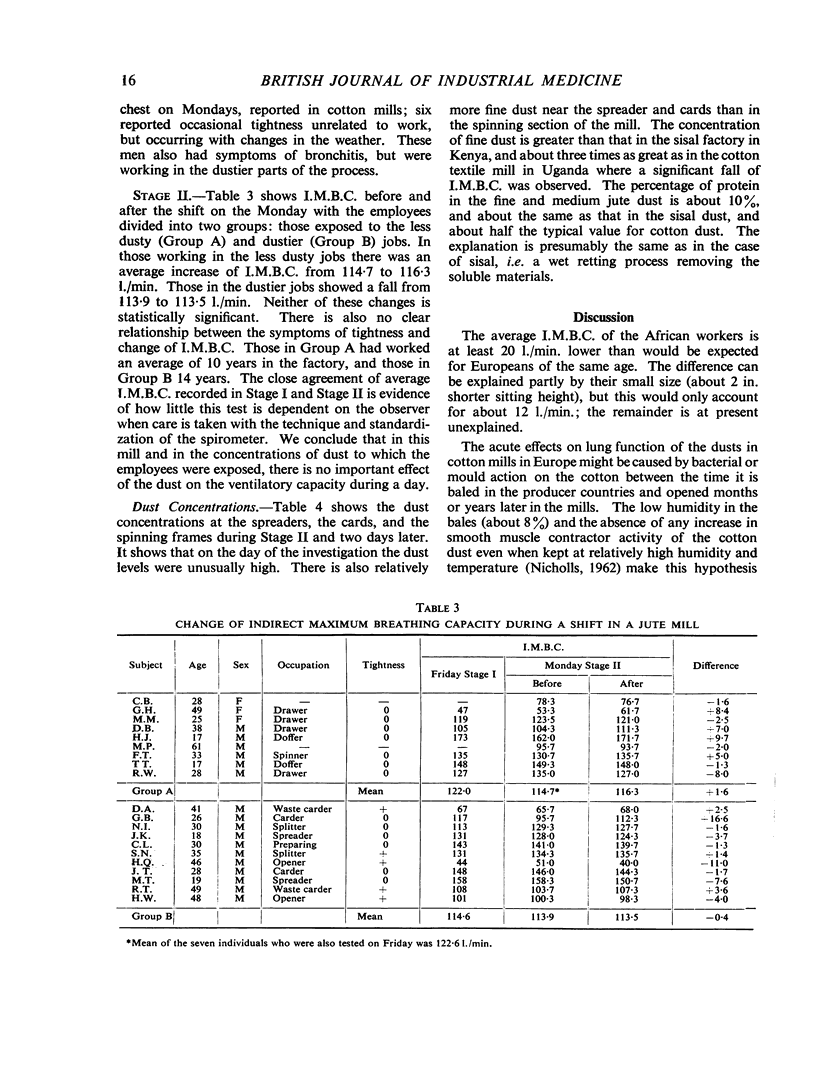
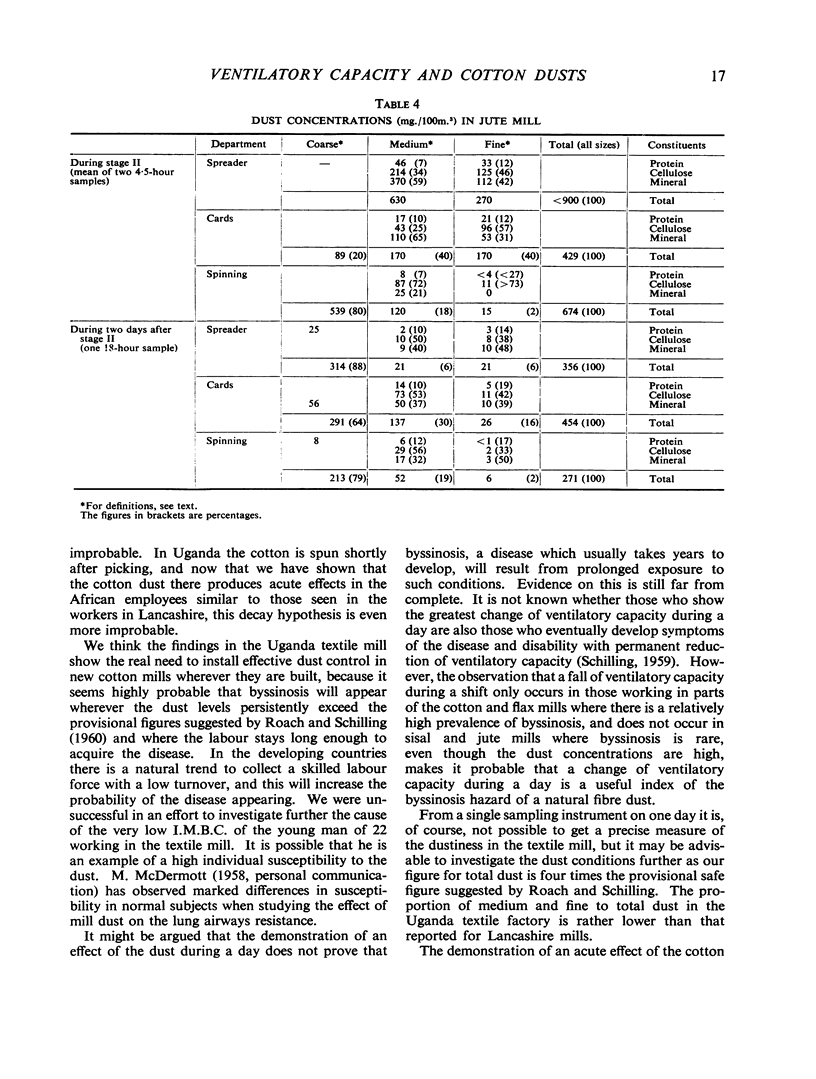
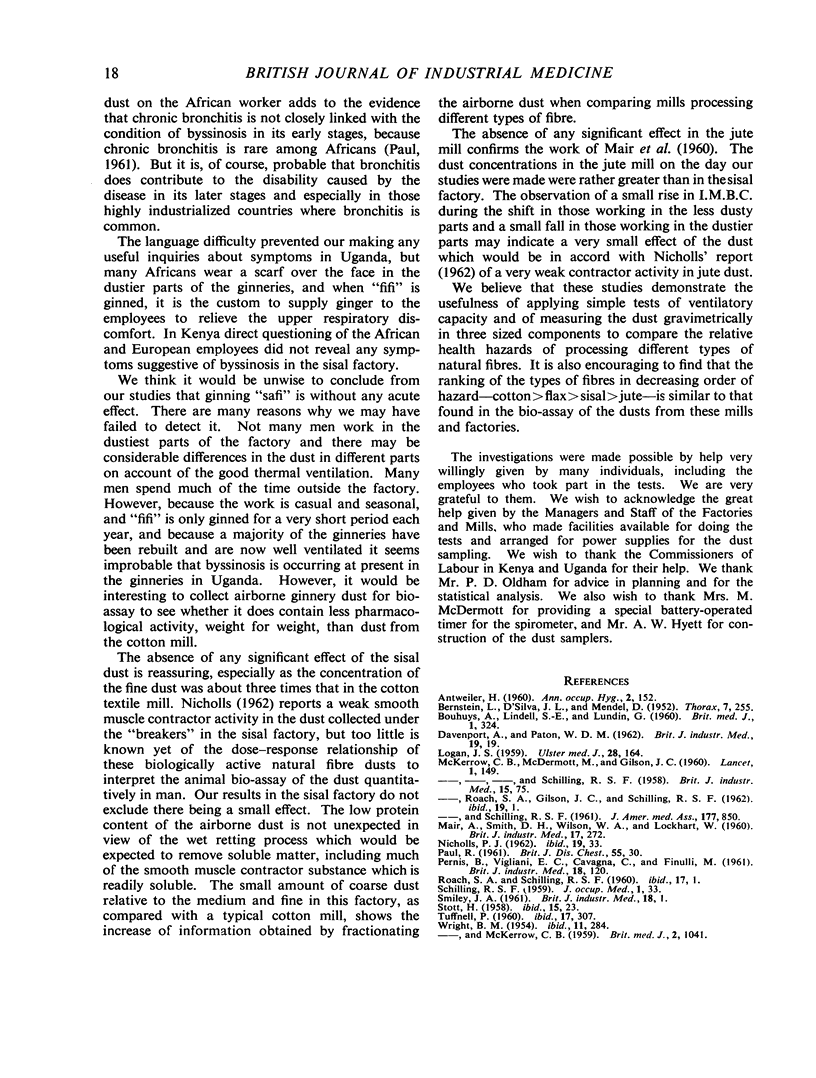
Images in this article
Selected References
These references are in PubMed. This may not be the complete list of references from this article.
- ANTWEILER H. Observations about a histamine liberating substance in cotton dust. Ann Occup Hyg. 1960 Jul;2:152–156. [PubMed] [Google Scholar]
- BERNSTEIN L., D'SILVA J. L., MENDEL D. The effect of the rate of breathing on the maximum breathing capacity determined with a new spirometer. Thorax. 1952 Sep;7(3):255–262. doi: 10.1136/thx.7.3.255. [DOI] [PMC free article] [PubMed] [Google Scholar]
- BOUHUYS A., LINDELL S. E., LUNDIN G. Experimental studies on byssinosis. Br Med J. 1960 Jan 30;1(5169):324–326. doi: 10.1136/bmj.1.5169.324. [DOI] [PMC free article] [PubMed] [Google Scholar]
- MAIR A., SMITH D. H., WILSON W. A., LOCKHART W. Dust diseases in Dundee textile workers. An investigation into chronic respiratory disease in jute and flax industries. Br J Ind Med. 1960 Oct;17:272–278. doi: 10.1136/oem.17.4.272. [DOI] [PMC free article] [PubMed] [Google Scholar]
- PAUL R. Chronic bronchitis in African miners and nonminers in Northern Rhodesia. Br J Dis Chest. 1961 Jan;55:30–34. doi: 10.1016/s0007-0971(61)80021-1. [DOI] [PubMed] [Google Scholar]
- PERNIS B., VIGLIANI E. C., CAVAGNA C., FINULLI M. The role of bacterial endotoxins in occupational diseases caused by inhaling vegetable dusts. Br J Ind Med. 1961 Apr;18:120–129. doi: 10.1136/oem.18.2.120. [DOI] [PMC free article] [PubMed] [Google Scholar]
- TUFFNELL P. Experimental byssinosis. Br J Ind Med. 1960 Oct;17:307–309. doi: 10.1136/oem.17.4.307. [DOI] [PMC free article] [PubMed] [Google Scholar]
- WRIGHT B. M., McKERROW C. B. Maximum forced expiratory flow rate as a measure of ventilatory capacity: with a description of a new portable instrument for measuring it. Br Med J. 1959 Nov 21;2(5159):1041–1046. doi: 10.1136/bmj.2.5159.1041. [DOI] [PMC free article] [PubMed] [Google Scholar]





